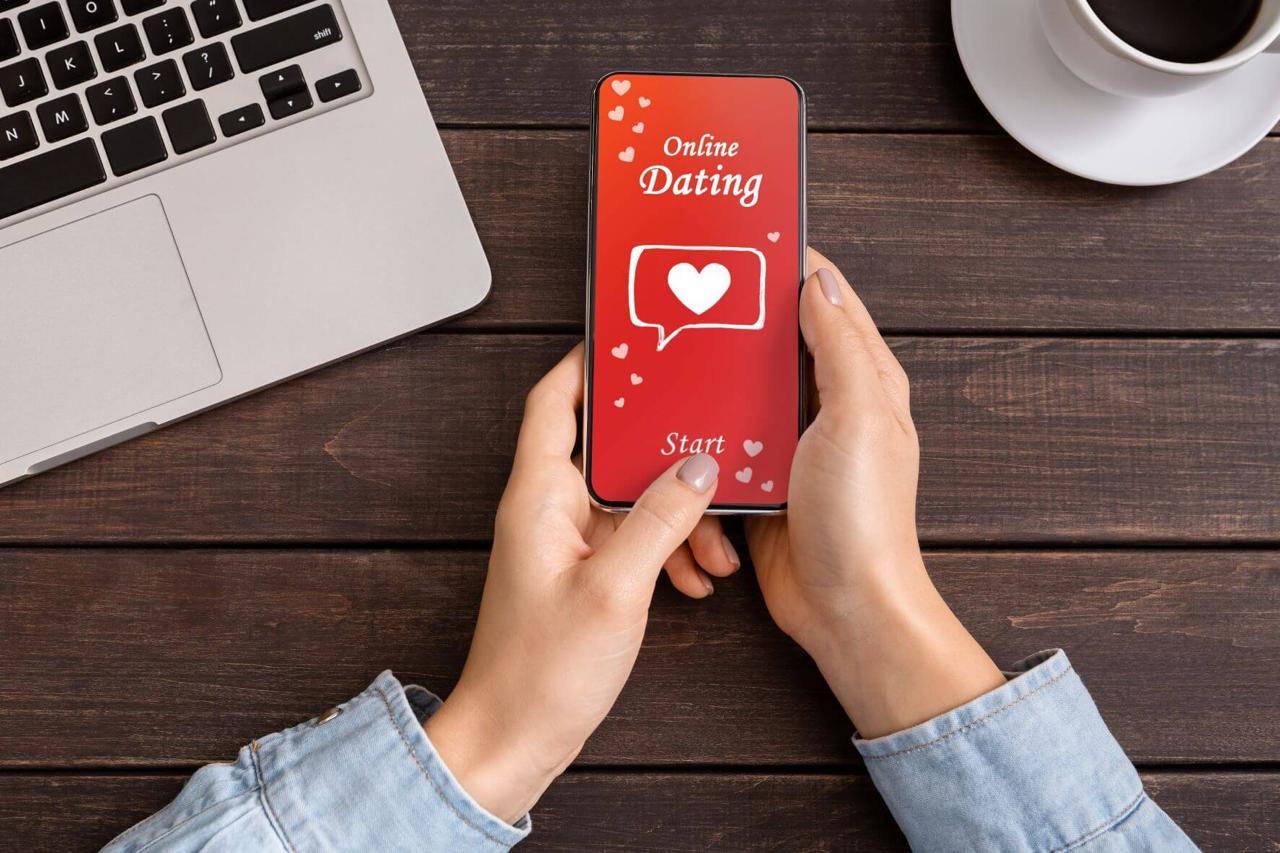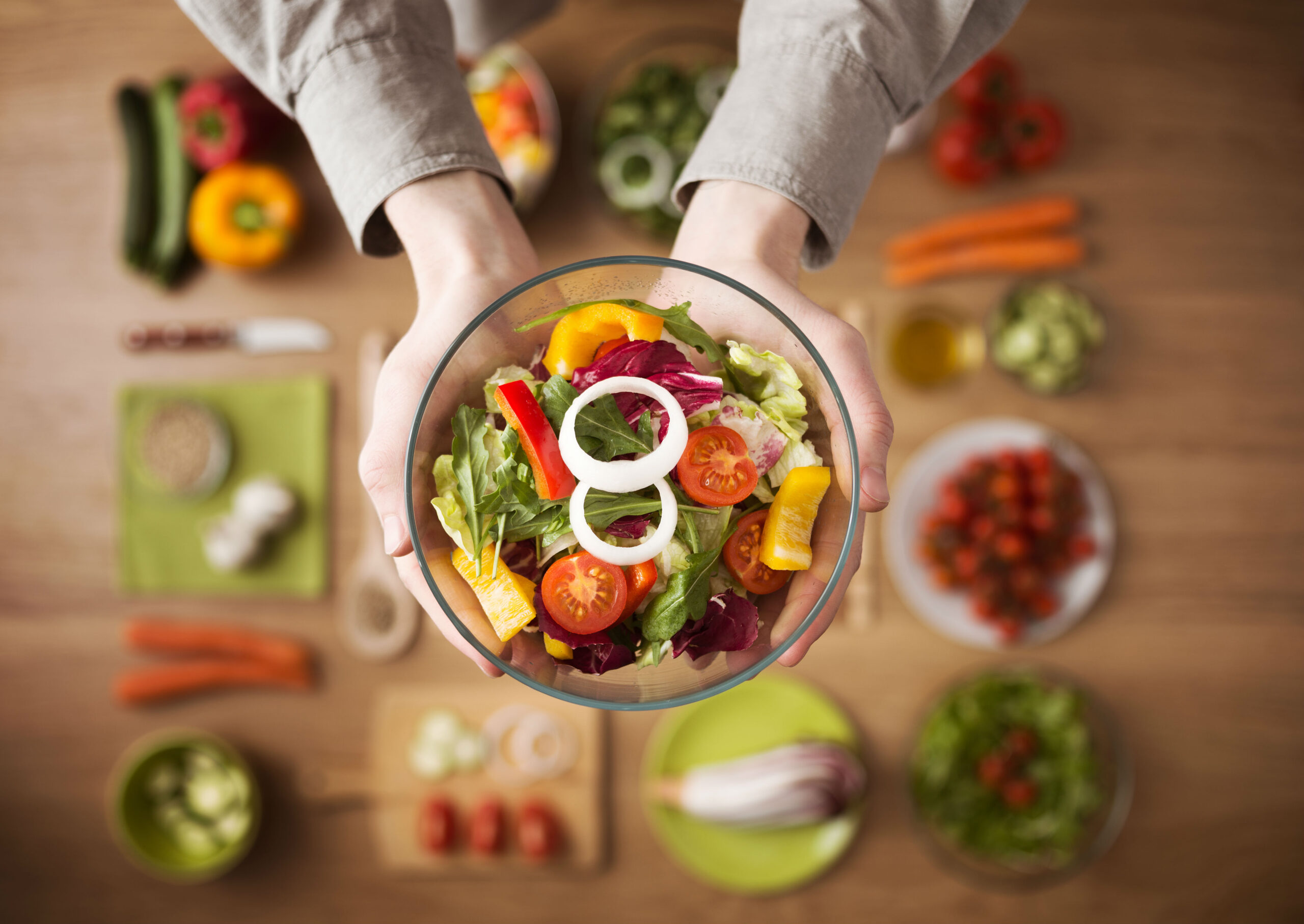In today’s interconnected world, finding love is as simple as reaching for your smartphone. From the convenience of your couch, you can easily connect with potential soulmates.
To streamline your search, it’s wise to strategically choose online dating apps that align with your interests and increase your chances of meeting like-minded individuals.
The development company specializing in online dating apps in the UK designs platforms that typically require users to complete detailed profiles and respond to questions about their personalities and interests.
Developing an online dating app that gains traction poses significant challenges. While competing directly with giants like Bumble may seem daunting, success lies in targeting specific niches, locations, or audiences.
Affiniti Global, for instance, has assisted numerous companies in integrating in-app chat functionalities into their dating apps. For developers contemplating entering this competitive market, we’ve crafted a comprehensive guide.
Before you jump into developing your dating app, there are some important steps you should take to set yourself up for success. This guide is here to give you all the information you need. We’ll start by looking at what the dating app landscape currently looks like, and then we’ll discuss key things to think about before you get started. We’ll also cover the essential features your app should have, what the development process will be like, and how much it might cost you.
Understanding the UK Dating App Market
Dating app in the UK market is dynamic and competitive, offering numerous opportunities for growth and innovation. According to Business of Apps, the UK dating app user base is steadily growing, with millions of active users seeking meaningful connections or casual encounters.
Major Dating Apps in the UK
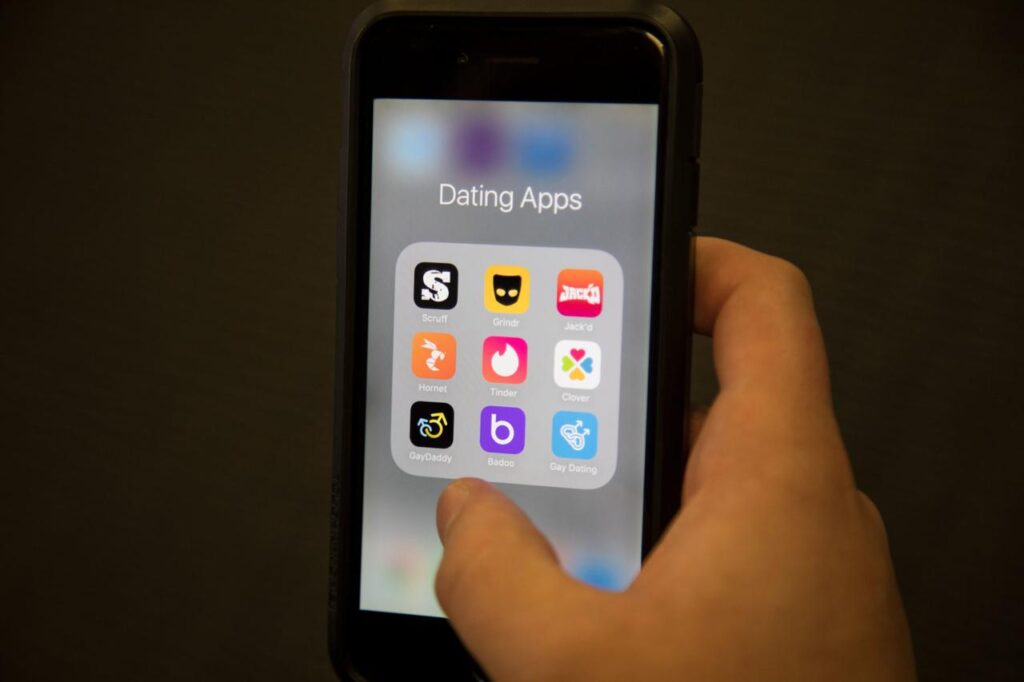
Bumble
- Overview: Bumble empowers women by requiring them to make the first move in heterosexual matches.
- Key Statistics: Bumble is valued at approximately $3 billion, with a growing user base in the UK.
- Features: In addition to dating, Bumble offers modes for networking and friendships, catering to diverse user needs.
Hinge
- Overview: Hinge focuses on fostering genuine connections by prompting users to engage with detailed profile prompts.
- Key Statistics: Hinge has seen rapid growth and is valued at around $1 billion, appealing to young professionals in the UK.
- Features: Hinge emphasizes relationship-focused matching, offering a premium subscription for enhanced features like unlimited likes and advanced filters.
Happn
- Overview:Happn is a location-based dating app that connects users who cross paths in real life. Launched in 2014 it emphasizes serendipitous connections by showing profiles of
- Key Statistics: Happn has a significant user base globally, with a strong presence in urban areas where encounters are frequent.
- Features: Shows profiles of users you’ve crossed paths with in real life.
Badoo
- Overview:Badoo is a comprehensive dating-focused social network, founded in 2006. It offers a blend of dating, social networking, and gaming features, making it one of the largest dating apps globally.
- Key Statistics:User Base: Badoo boasts over 400 million registered users worldwide, making it one of the largest dating platforms.
- Features: Allows users to swipe through potential matches.
What does it take to develop dating app solutions?
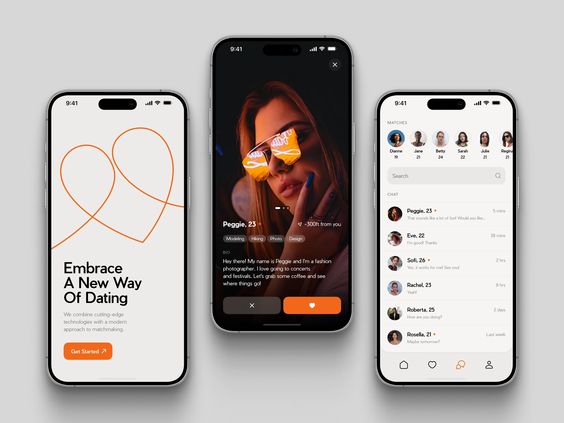
Let’s delve into the burgeoning industry of dating apps with some compelling facts:
- According to Businessofapps, the global user base for dating apps has surged, surpassing 323 million people worldwide, driven largely by the increasing prevalence of mobile dating.
- ResearchAndMarkets projects that the Global Dating Apps market will grow steadily, with a projected Compound Annual Growth Rate (CAGR) of approximately 6% by 2024, indicating rising annual profits.
- Despite a peak of 287.4 million downloads in 2019, global dating app downloads have shown a slight decline over the past two years, reflecting evolving user behaviors.
- Statista forecasts that US online dating revenue is set to reach $755 billion by 2024, underscoring the robust financial potential of the industry.
- For skeptics, the effectiveness of dating apps is evident. Bumble reports that a significant majority of users are actively seeking committed relationships, with many millennials citing successful partnerships initiated through dating apps among their social circles.
With a high demand and a market ripe for innovation, many aspiring entrepreneurs are drawn to the dating app development sector, aiming to capitalize on its growth and potential success
Now, let’s explore the essential components of building a successful mobile dating app, including key features and the associated development costs
Creating a Dating App: A Step-by-Step Guide

You can create dating apps by following the steps outlined below.
- Brainstorming and Conceptualization: Start by brainstorming ideas for your dating app. This initial phase is crucial for generating unique concepts that will differentiate your app from others in the market.
- Defining Unique App Features: Once you’ve settled on a concept, articulate its distinctive features. This step is pivotal in standing out and catering to specific user preferences or needs.
- Wireframing and Prototyping: Begin the design phase by creating wireframes and prototypes. These visual representations outline the app’s layout and functionalities, aiding in planning the user experience.
- User Interface Design: Develop the actual user interface (UI) during this stage. This involves selecting colors, fonts, and icons to create an appealing and user-friendly interface.
- Front-end and Back-end Development: The development phase is split into front-end (UI/UX) and back-end (server-side operations, databases, algorithms). Both are crucial for a seamless user experience.
- Technology Stack Selection: Choose a suitable technology stack considering factors like programming languages, frameworks, and databases. This decision impacts the app’s performance and scalability.
- Functionality and Security Assurance: Conduct thorough testing to ensure the app functions properly and user data remains secure. This encompasses functional testing and rigorous security assessments.
- Bug Rectification and User Feedback: Address any bugs uncovered during testing and incorporate feedback from real users to improve the app.
- App Store Submission and Review: Prepare the app for submission to platforms like the Apple App Store and Google Play Store. Adhere to their guidelines and undergo their review process.
- Launch Strategy: Develop a comprehensive launch strategy inclusive of marketing efforts. Consider user acquisition and community-building plans to ensure a successful market entry for your dating app.
Dating App Market Trends

The dating app market is dynamic and continuously evolving, influenced by changing user preferences, technological advancements, and societal shifts. Here are some key trends shaping the current landscape:
1. Integration of Social Features: Dating apps are expanding beyond traditional matchmaking to incorporate social elements such as group events, virtual hangouts, and community forums. This shift aims to foster deeper connections and facilitate broader social interactions among users.
2. Video and Virtual Dating: Accelerated by the pandemic, video dating has become mainstream. Apps now offer features for virtual dates, video profiles, and live streaming, providing users with alternatives to in-person meetings and enhancing safety and convenience.
3. Personalization and AI: Advanced algorithms and AI-driven matchmaking are increasingly used to personalize user experiences. These technologies analyze user behavior, preferences, and interactions to suggest more relevant matches, improving overall user satisfaction.
4. Niche and Specialty Apps: There’s a growing trend towards niche dating apps catering to specific interests, lifestyles, or communities. These platforms target underserved demographics and offer tailored experiences that resonate deeply with users seeking unique connections.
5. Safety and Security: With heightened awareness of online safety, dating apps are prioritizing robust security measures, including identity verification, moderation of content, and safety features like panic buttons. Building trust and ensuring user safety are critical in retaining and attracting users.
6.Sustainability and Values: Many users now prioritize values alignment and sustainability in their dating choices. Apps that promote eco-friendly dating practices, support social causes, or emphasize compatibility based on shared values are gaining popularity.
7.Monetization Strategies: While freemium models (free basic features with premium upgrades) remain prevalent, apps are exploring new monetization avenues such as in-app purchases, advertising, and subscription tiers with enhanced features.
8. Global Expansion: Dating apps are increasingly expanding their reach globally, adapting to local cultures, languages, and preferences. This expansion not only broadens user bases but also enhances diversity and inclusivity within the dating pool.
9. Offline to Online Experiences: Apps are integrating offline activities and real-world events to bridge the gap between digital interactions and real-life connections. This trend aims to enhance user engagement and deepen relationships beyond the virtual realm.
10. Continuous Innovation: To stay competitive, dating apps are investing in innovation, including UX/UI improvements, AI advancements, and novel features that enhance user engagement and satisfaction
Dating app development – features, process, Design and Architecture of Dating Apps

Developing a dating app involves a multifaceted approach that encompasses several key aspects. Initially, defining a robust feature set is crucial, including profile creation, matching algorithms, messaging capabilities, and geolocation services for user discovery. The development process typically follows iterative cycles, from initial ideation and wireframing through prototyping, testing, and deployment.
Design plays a pivotal role, focusing on intuitive user interfaces, engaging user experiences, and aesthetic appeal that resonate with the target demographic. Architecturally, scalable backend infrastructure, secure data handling, and integration with third-party services are essential to ensure seamless functionality and user privacy. Effective dating app development requires a blend of technical expertise, user-centric design, and a deep understanding of market dynamics to create a compelling and competitive product.
Development Project Lifecycle in 7 Stages

To grasp the extensive commitment of time, financial investment, and resources required for developing a dating app, it’s essential to understand the comprehensive journey from inception to post-launch maintenance:
1.Market Analysis:
Conducting thorough market analysis is pivotal. Understanding competitor apps and user preferences is crucial to ensure the dating app meets market demands effectively.
2. Project Management:
Effective project management is indispensable due to the complexity of app development. A dedicated project manager oversees the process, aligning stakeholders and guiding the project towards its intended goals.
3. Design:
Designing a dating app involves more than coding—it requires creating intuitive interfaces for optimal user experience. Budget allocation must cover both developers and designers to craft a visually appealing and user-friendly app.
4. Development:
The development phase constitutes the core of the project, consuming significant time and resources. Agile methodologies and sprint cycles are popular approaches to ensure iterative progress and flexibility in adapting to evolving requirements.
5.Quality Assurance:
Ensuring app security and functionality is critical. Although achieving a completely bug-free app is unrealistic, rigorous testing and attention to detail are essential to minimize vulnerabilities and ensure optimal performance, scalability, and resource efficiency.
6. App Launch:
The launch day marks a culmination of efforts, presenting the finished product to eager users. Proper preparation, compliance with platform guidelines (iOS App Store, Google Play), and an effective marketing strategy are crucial for a successful launch.
7. Post-launch Maintenance:
Following the launch, ongoing maintenance becomes imperative. Addressing user feedback, fixing bugs promptly, enhancing features, and exploring new monetization avenues ensure the app remains competitive and evolves alongside user needs and market trends.
In essence, developing a dating app is not just about creating software—it’s a comprehensive process that demands meticulous planning, execution, and continuous improvement to sustain its relevance and success in a competitive market.
Features and Process of Dating Apps

Features play a significant role in determining how much resources will be utilized while developing a mobile app.
Adding functionalities is a constant and innovative process, but to achieve standardization, you need to integrate a few must-have features of dating apps:
Log in via your social media accounts
The dating application allows users to sign in using their existing accounts from social networking platforms such as Google, Facebook, Twitter, or Instagram. When members of a dating site can combine their social media profiles with the platform, it demonstrates a higher level of reliability.
Match Making
The process of matching potential partners is an essential component of dating apps. People sign up for a dating app with the expectation of a positive result, and if you’re developing one, you need to add a function that allows users to make matches or swipe left or right on potential partners.
Real-time chatting
In-app texting is another important feature of a dating app for couples who share similar interests and have been matched by the algorithm. This feature should only be enabled for the users who have been mutually matched on the dating application.
Enable GeoTech
Your dating app must have geolocation functionality. The incorporation of this feature was primarily motivated by the need to discover persons within a certain radius. When you delegate the project to the team or dating app developers for your mobile app development, ensure that the geolocation API and Core Location have been installed.
Push Notifications
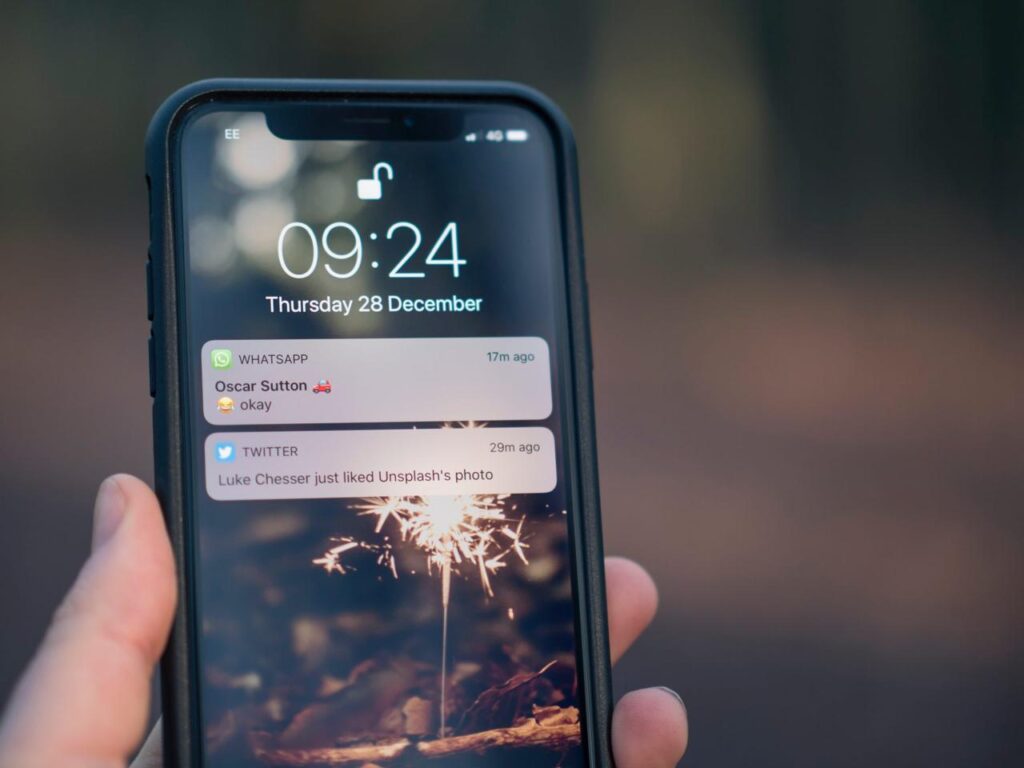
The app delivers push alerts to users for instant updates. This can also be done by sending direct emails or to their registered mobile number. Users can keep up to speed on matches, profile recommendations, communications, and other relevant information through notifications, which are like friendly nudges. Users do not need to wait for the app to recognize the activity they are engaging in. These essential qualities entice users to return to the dating apps often and participate actively.
Gamification
Every dating app has user profiles, but that doesn’t mean they have to follow the same cookie-cutter format as all the other apps. You can get creative by integrating rich media into your user-profiles and even introducing a gamification layer that reinforces user behavior with perceived benefits.
Design and Architecture of Dating Apps
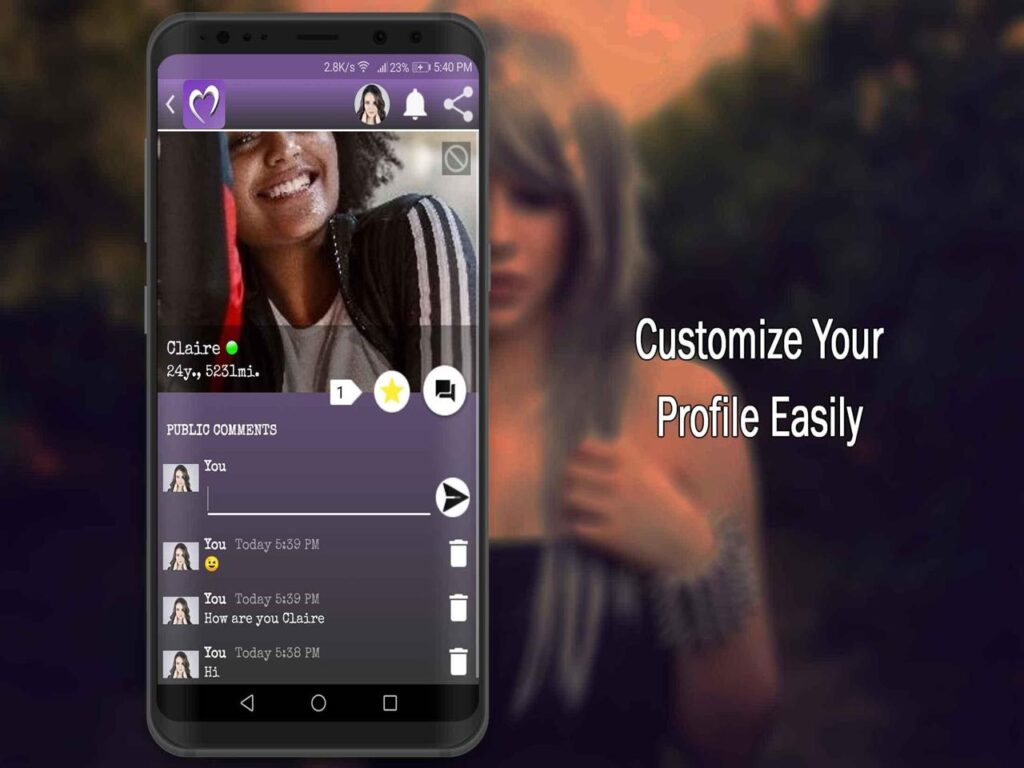
Creating a successful dating app involves meticulous planning and a robust architecture to ensure seamless user experience and security.
User Personas:
Developing detailed user personas is crucial when designing a dating app. Instead of targeting a broad audience like Tinder, focusing on niche segments such as dog lovers or the over 50s can help tailor the app experience more effectively.
User Flows:
Visualizing user interactions through wireframes and prototypes is essential for mapping out how users will navigate profiles, find matches, and communicate. This step ensures a user-friendly interface that enhances engagement.
Dating App Architecture:
For an MVP (Minimum Viable Product) of a dating app, essential components include social sign-in, robust security measures, geolocation services, user profiles, customizable settings, a messaging system with push notifications, and an effective matching algorithm. These elements must be integrated into a coherent system architecture.
Interface and User Experience:
The interface should prioritize simplicity and intuitive design to cater to tech-savvy users who expect seamless navigation. Clear and straightforward UI elements enhance usability and encourage prolonged app engagement.
User Data Protection and Security:
Due to the sensitive nature of user data in dating apps, implementing stringent security measures is paramount. This includes PGP-based encryption for message security, strong authentication methods like multi-factor authentication (MFA), and secure communication protocols such as SSL/TLS to protect data in transit.
Ensuring Reliable Performance and Scalability:
Anticipating scalability is essential from the outset of app development. Even niche apps can experience rapid growth, as seen with Tinder’s global success. Building a scalable infrastructure with clean code and leveraging scalable cloud solutions ensures the app can handle increasing user volumes without compromising performance.
Technology Stack for Dating Apps

To help you build a dating app with all of the aforementioned components, we created a table showing the technology stacks for both iOS and Android devices as well as cross-platform apps.
- For maximum reach in the mobile app market, choosing a cross-platform framework like React Native maximizes the number of device types your app can support. Tinder is an example of a cross-platform mobile app built on the React Native framework. We’ve written a tutorial on how to build a dating app using React Native.
- For best performance, however, it may be worth building your dating app from the ground up using popular frameworks such as Swift for iOS, or Java/Kotlin for Android with python for the backend.
- Whether you decide to build a native or cross-platform dating app, you will likely be integrating component functionalities through APIs and microservices. Your microservice architecture will be made up of at least a few REST APIs listed in the table above and other popular dating app APIs. Finally, if you want to use cutting-edge machine learning and AI technologies in your dating app, you can check out Amazon ML, MonkeyLearn, Rapid API, and other machine learning APIs.
- Latest Technologies in Dating App Development
- Database and cloud storage can be used to store user data and preferences, in which geosharding can be used to reduce server load.
- Machine learning and AI can also be used to create dynamic matching algorithms that make intelligent matches between users based on “learning” from their evolving preferences and previous matching activity.
- Authentication combined with social integration can be used to verify user identities, prevent fake profile creation, and protect users from spam, harassment, and other types of harm. Social integration can also pull profile data and photos from users’ social media profiles into the dating app itself.
- Payment integration is used for subscriptions, recurring payments, and other in-app purchases as part of your dating app monetization strategy.
- Video and voice chat APIs can quickly be integrated with the app’s native messaging functionality to enhance in-app chat for users.
Building In-App Chat for your Dating App

When developing a dating app, one of the critical decisions is whether to build the in-app chat functionality from scratch or utilize existing chat and messaging APIs, such as those offered by Afiniti Global.
Opting to develop in-app chat from scratch requires substantial time, capital investment, and infrastructure setup. This approach also carries an opportunity cost, potentially diverting resources from developing innovative new features unique to your app. On the other hand, leveraging Afiniti Global’s SDK for in-app chat provides a customizable solution that accelerates development significantly compared to starting from scratch.
Afiniti Global’s SDK is highly flexible, allowing developers to innovate and integrate various chat functionalities quickly. Their platform includes a comprehensive suite of APIs for messaging, voice, and video calling. For instance, developers can easily incorporate features like read receipts, typing indicators, file sharing, and online presence indicators into their dating app’s chat system.
Additionally, Afiniti Global offers pre-built extensions through their marketplace, simplifying the integration of advanced features without extensive development effort. Developers can also create custom extensions, webhooks, and bots to enhance user engagement further.
Afiniti Global’s chat and messaging APIs support multiple programming languages and frameworks, ensuring compatibility with iOS (Swift), Android (Java/Kotlin), React Native, Ionic, and web applications (JavaScript SDK). Their SDKs come with built-in security measures and privacy compliance, alleviating concerns about data protection and regulatory requirements.
For voice and video chat functionalities akin to popular dating apps like Tinder or Bumble, Afiniti Global provides straightforward integration guides for iOS, Android, React Native, Ionic, and web platforms. Their SDKs include features such as CallKit and PushKit for iOS, enhancing the user experience with seamless calling capabilities.
Whether you’re developing for iOS, Android, or cross-platform environments, Afiniti Global’s platform equips developers with the necessary tools to create a feature-rich dating app efficiently.Their developer platform offers comprehensive tutorials, documentation, and support, ensuring a smooth integration process and ongoing maintenance of chat and calling functionalities.
Dating App Revenue and Usage Statistics (2024)
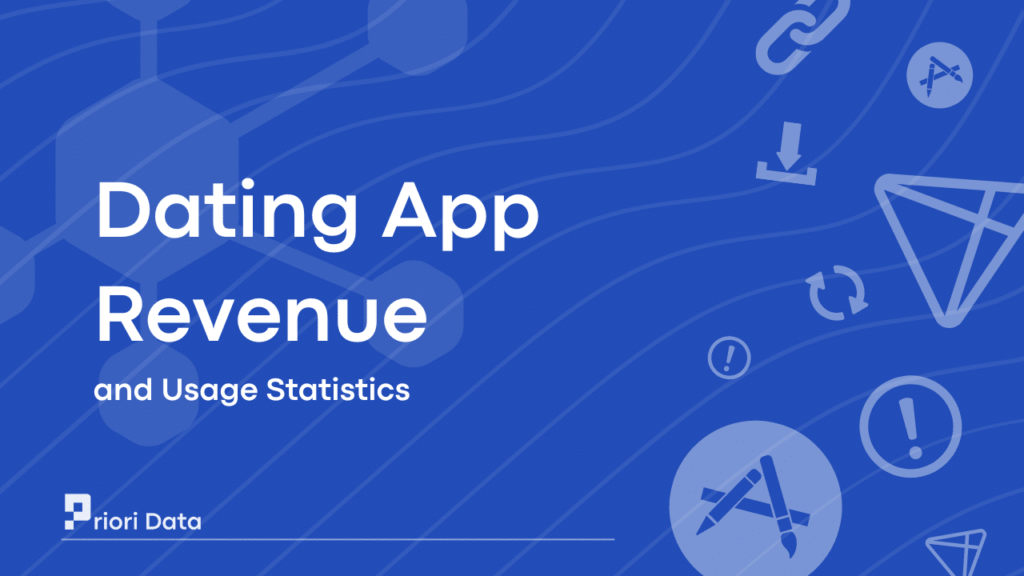
In 2013, Tinder revolutionized online dating by introducing a simple swipe-based system: swipe right if interested, left if not. This approach allowed users to quickly decide on potential matches based primarily on photos, moving away from traditional matchmaking methods involving extensive profile browsing.
However, while Tinder simplified the dating process, studies suggest it shifted the focus towards casual encounters and superficial interactions rather than fostering lasting relationships. Created by Hatch Labs, funded by IAC, Tinder emerged under the umbrella of a company that also owned Match.com, Plenty of Fish, and OK Cupid, inadvertently competing with its own services.
In the United States, Tinder has dominated the dating app market since its inception, but globally, Badoo has emerged as a prominent player, particularly in Europe and South America. Founded by Russian entrepreneur Andrey Andreev, Badoo initially started as a social games and quiz app on Facebook.
With over 400 million registered users worldwide, Badoo holds the title of the most downloaded dating app globally, although it has struggled to gain traction in the US market. In 2014, Andreev collaborated with Tinder co-founder Whitney Wolfe Herd to launch Bumble, which differentiated itself by empowering women to initiate conversations—a move that resonated well in North America, drawing users away from Tinder.
Bumble’s growth reflects shifting attitudes towards dating, with more emphasis on respectful interactions and meaningful connections rather than casual hook-ups. Similarly, Hinge, another app owned by IAC, pivoted its platform in 2017 to focus on fostering long-term relationships, catering to users seeking more substantive connections.
Despite these shifts, Tinder and Badoo continue to lead in monthly active users globally. In regions like China and Southeast Asia, casual dating apps remain highly popular, indicating diverse preferences across different markets.
The dating app landscape continues to evolve, influenced by technological innovations, changing societal norms, and shifting user expectations, shaping how people approach relationships in the digital age.
Dating app key statistics
- The dating app market made $5.34 billion revenue in 2022, $2.8 billion came from Match Group
- Over 300 million people use dating apps worldwide, with about 20 million paying for premium features
- Tinder was the most downloaded app in 2023, followed by Bumble
- Tinder is the most popular dating app in the United States and Europe
Global Dating App Revenue
Global dating app revenue has experienced significant growth in recent years After a slump in the early 2010s, dating app revenues have increased every year since 2015, reaching $5.34 billion in 2023.
Here are some detailed insights into global dating app revenue:
- Market Size and Growth: The global online dating market size was valued at around $6.4 billion in 2020 and is projected to grow significantly in the coming years. This growth is fueled by increasing internet penetration, smartphone adoption, and changing cultural norms favoring online dating.
- Revenue Streams: Dating apps generate revenue primarily through subscription models, in-app purchases, advertising, and premium features. Subscription models, where users pay a recurring fee for premium access, are the most common revenue source.
- User Base: Dating apps attract a diverse user base spanning various demographics, including age groups from young adults to seniors, and different socio-economic backgrounds. The user base is also increasingly global, with apps catering to specific regions or going international.
- Monetization Trends: Apps are adopting innovative monetization strategies, such as offering freemium models (basic services free, premium features paid), virtual gifts, and partnerships with local businesses for promotional tie-ins.
- Regional Variations: Revenue and user engagement vary by region. North America and Europe traditionally lead in terms of revenue, while Asia-Pacific and Latin America show significant growth potential due to increasing smartphone penetration and internet usage.
- Impact of COVID-19: The pandemic accelerated digital transformation, including online dating, as people sought virtual connections amid lockdowns and social distancing measures. This boosted user engagement and revenue for dating apps.
- Competitive Landscape: The market is competitive, with major players like Tinder, Bumble, Match.com, and others continually innovating to retain users and attract new ones. Niche dating apps focusing on specific interests or demographics also contribute to the market’s diversity.
Overall, the global dating app revenue landscape is dynamic, characterized by growth, innovation, and evolving user preferences.
Global Dating App Users

Usage has also increased, with 349 million people worldwide using dating apps. The vast majority of matchmaking is done on mobile devices
Global Dating App Downloads
Downloads have actually decreased in the past four years, from a peak of 287.4 million downloads in 2019.
Global Dating Users by App
Tinder and Badoo were in a two horse race for users since 2015, but Tinder has pulled far ahead in the past few years. Bumble looks to be the next potential competitor.
US Dating App Market Share

Tinder is the leader in the US dating app market, but Bumble has increased its market share every year since 2017. Hinge is also positioning itself as a potential leader in the near future.
US dating app market share 2023 (%)
The Estimated Cost of Developing an Ideal Dating App
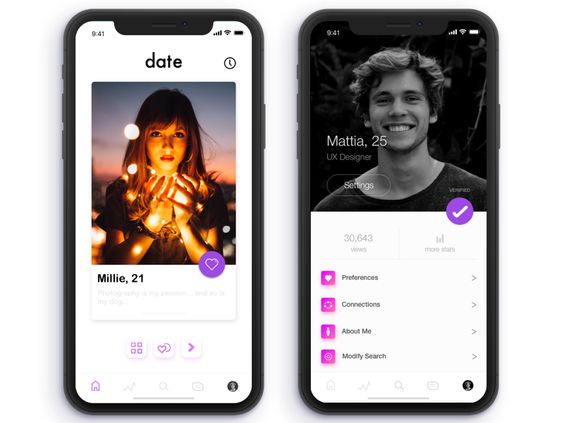
The app’s design is one of the essential factors in converting prospective users into paying customers. An app’s overall visual design is crucial in attracting consumers and keeping them engaged with your service.
While pre-built themes may save time and money, your dating app will appear like every other generic app on the market with nothing unique or exciting.
The cost of developing a dating app can vary significantly due to several factors, making it challenging to pinpoint a single answer. Depending on factors such as developer hiring strategy, project complexity, design intricacy, use of pre-built resources versus building from scratch, and the number of platforms targeted, costs can range widely.
For instance, Formotus suggests an average development cost of approximately $140,000 over 6-12 months for a mobile app. Moreover, ongoing maintenance expenses could amount to 15-20% of the initial project cost annually. For example, a $100,000 app might incur $15,000 to $20,000 in yearly maintenance fees post-launch.
Factors influencing costs include the type of project, the development team employed, the complexity of features and design, the extent of original versus pre-existing code usage, and whether the app is developed for multiple platforms or a single cross-platform base.
To streamline development expenses, leveraging pre-built APIs and microservices can significantly reduce costs by up to 50-70% compared to developing everything from scratch. These standardized functionalities are common across many apps, eliminating redundancy and speeding up the project lifecycle.
Sources such as Formotus, BusinessOfApps, and others provide insights into estimating these costs, highlighting the range and variability involved in dating app development.
Dating App Report 2024
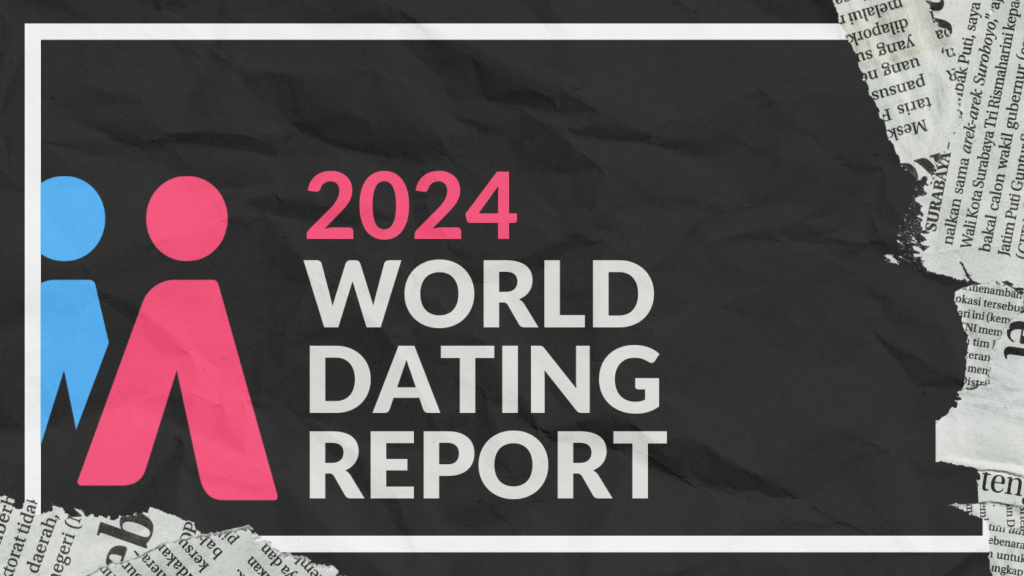
Our Dating App Report is the most thorough research available, with over 100 pages of data on the dating app industry. It includes market size projections, individual app revenues, usage and download statistics, country-specific market share, demographics by app, and industry benchmarking data.
The Dating App Report – Research, Insights and Statistics has been assembled by our in-house team of analysts at Business of Apps. We believe this is the most comprehensive report available on the app market. If you have any questions get in touch Afiniti Global
Dating App Report 2024: Insights and Trends
As we step into 2024, the dating app landscape continues to evolve, shaped by technological advancements, changing societal norms, and shifting user preferences. Here’s a comprehensive overview of the current state and emerging trends in the dating app industry:
1.Market Overview and Growth
The global dating app market is experiencing steady growth, with projections indicating a compound annual growth rate (CAGR) of approximately 6% through 2024. This growth is fueled by increasing smartphone penetration, rising digital literacy, and a growing acceptance of online dating platforms worldwide.
2. Key Players and Market Share
In the United States, Tinder maintains its position as the market leader, renowned for its user-friendly interface and widespread popularity among younger demographics seeking casual connections. Bumble follows closely, distinguishing itself with its feminist approach that empowers women to initiate conversations.
Other significant players include Match.com, OkCupid, and Plenty of Fish (POF), each catering to diverse segments of the dating market—from serious relationships to casual dating—under the Match Group umbrella. Hinge continues to gain traction with its focus on fostering meaningful connections, appealing particularly to young professionals.
3. Regional Dynamics
While Tinder dominates in North America, Badoo holds sway in Europe and South America, leveraging its extensive global reach and diverse user base. Regional variations in dating app usage highlight cultural differences and varying preferences, influencing app design, features, and marketing strategies.
4. Emerging Trends
Innovative Features Dating apps are integrating advanced features such as AI-driven matchmaking algorithms, video and voice calling capabilities, and virtual events to enhance user engagement and satisfaction.
Safety and Privacy: With increasing concerns about data security, apps are implementing robust safety features, verification processes, and privacy controls to protect user information and build trust.
5. Monetization Strategies
Freemium models remain prevalent, where basic app usage is free, but users can opt for premium subscriptions to unlock additional features and ad-free experiences. In-app purchases for virtual gifts, boosts in visibility, and premium content are also popular monetization avenues.
6. Challenges and Opportunities
Competition and Differentiation: As the market becomes saturated, dating apps must innovate continuously to differentiate themselves and attract and retain users. Unique features, personalized user experiences, and targeted marketing campaigns are critical.
Regulatory Landscape: Compliance with data protection regulations, such as GDPR and CCPA, poses challenges but also opportunities for apps to demonstrate commitment to user privacy and security.
7.Future Outlook
Looking ahead, the dating app industry is poised for continued growth, driven by technological innovation, demographic shifts, and evolving user expectations. The focus on user experience, inclusivity, and community building will be pivotal in shaping the next generation of dating platforms.
Discussion: Affiniti Global and the Future of Dating Apps
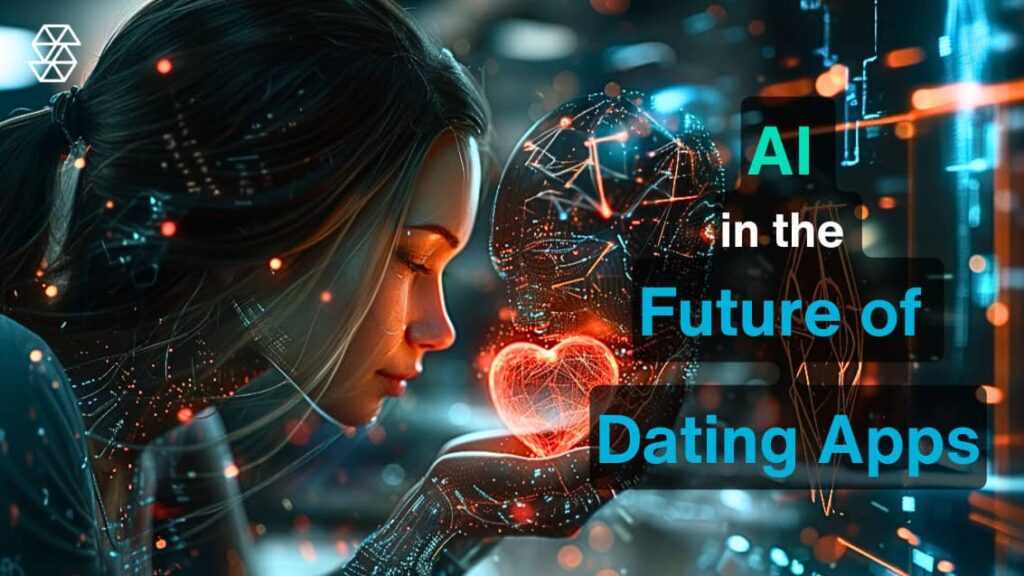
Affiniti Global, a prominent company specializing in dating apps, stands out for its innovative approach and global reach. With a focus on user experience and technological innovation, Affiniti Global is poised to elevate the dating app experience in the UK and beyond. As the industry continues to evolve, companies like Affiniti Global play a pivotal role in shaping the future of digital matchmaking.
Final Thoughts
In today’s fast-paced world, dating apps offer a convenient and efficient way for people to connect amidst their busy lives.
The key to building a successful dating app lies in understanding that users are often pressed for time and seek features that enhance efficiency and quickly meet their dating needs. They expect an intuitive, easy-to-use interface that performs reliably.
The advantage lies in leveraging existing tools and APIs. With Afiniti Global’s comprehensive SDK framework and reliable API integrations, developers can accelerate the app development process. These solutions provide robust features that streamline the integration of essential functionalities. For developers looking to create a dynamic dating app, Afiniti Global offers a seamless pathway. Sign in to the Afiniti Global platform today to access a range of tools and start integrating advanced features into your dating app effortlessl
